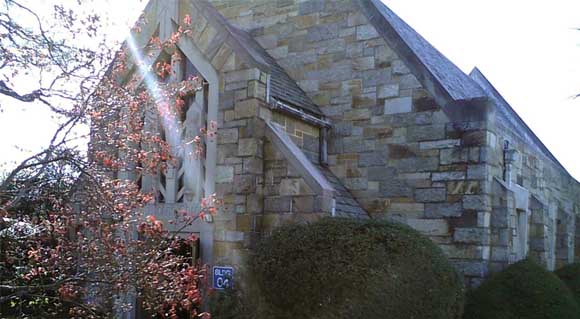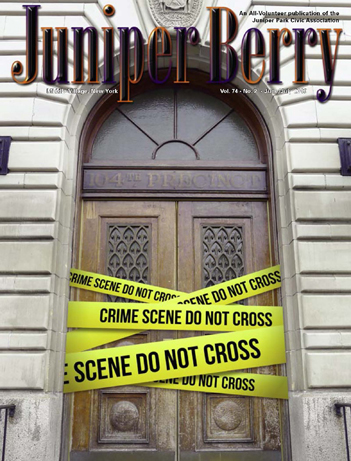It was an early Sunday morning and I was quickly walking to St. John’s Cemetery’s chapel as I had done almost every Sunday for the last year. The gusts of winds were sharp and my breath was visible in the cold air as it exhausted from my mouth. Once inside the small chapel, I bless myself with holy water, grab a red mass booklet, make my way to the fourth row from the back, genuflect and sit down. I say the prayer of St. Thomas Aquinas as the Collorafi family, a large family that runs the choir, warms up and the congregation slowly fills the pews.
While this sounds somewhat typical of most practicing Catholics in our community, there is one exceptional difference. St. John’s Chapel celebrates the Tridentine Mass, the type that all Catholics use to partake of before Vatican II. Middle Village has one of only two churches in Queens County and one of fifty-two in all of New York State that have the mass done in Latin.
At the advice of a writer friend of mine, I decided to attend the traditional mass expecting only to be lost in translation throughout most of it. I found however the solace and, for lack of a better word, maturity that I did not experience growing up in the post-Vatican II mass (Novus Ordo Mass) that most Catholics celebrate.
Like it used to be
The traditional mass has many differences from what most Catholics experience on Sunday: Its entirety with the exception of the gospel and homily is performed in Latin; many women still cover their heads; there is no shaking hands saluting “peace be with you;” and the communion is received on the tongue, not with your hands. Many of the customs were unusual at first, but exploring the mass and observing the subculture of Catholics that celebrated it together was enlightening. Over the year I’ve attended the mass, I’ve never heard a cell phone ring. The entire congregation stays after communion, and most stay until the end of the closing song.
Nine-thirty morning mass usually has between fifty and one hundred people in attendance, many of whom are senior citizens and young families. Many of the families who attend are the large families that used to be more common among devout Catholics; one of the other parishioners I’ve gotten to know has eight children, and a handful of other families have from five to nine children.
The families come from all over to attend the mass, many from Nassau County. Father Joseph Wilson, from St. Margaret’s Church, commonly presides over the mass. Father Wilson says, “we are growing,” and certainly the Latin Mass at St. John’s is not alone. The Latin Mass is experiencing a sort of renaissance. Pope Benedict XVI issued Summorum Pontificum, which made it clear that the traditional Latin Mass was never officially discontinued, and allowed priests to offer it without the permission of their bishops.
Middle Village and the surrounding areas of Maspeth and Glendale have certainly become more eclectic over the last few years. We went from having a wide range of cemeteries to having a wide range of new restaurants, gyms, and schools. The Latin Mass at St. John’s adds to the unique variety this neighborhood is becoming known for.
I make my way from St. John’s Chapel back to my home, pick up the Sunday New York Times and a copy of The Forum as I do, usual to my Sunday routine. I flip the pages over a cup of tea to the real estate section. One of my favorite areas is their profile of different neighborhoods in the New York City metropolitan area. So far, no profile on Middle Village, I suspect they couldn’t do it justice in the space allocated.
St. John’s Chapel offers the Latin Mass on Sundays at 9:30am.
Ryan James Girdusky is a Maspeth native who has been published in Human Events, American Spectator, Christian Science Monitor, and Dailycaller.com.




